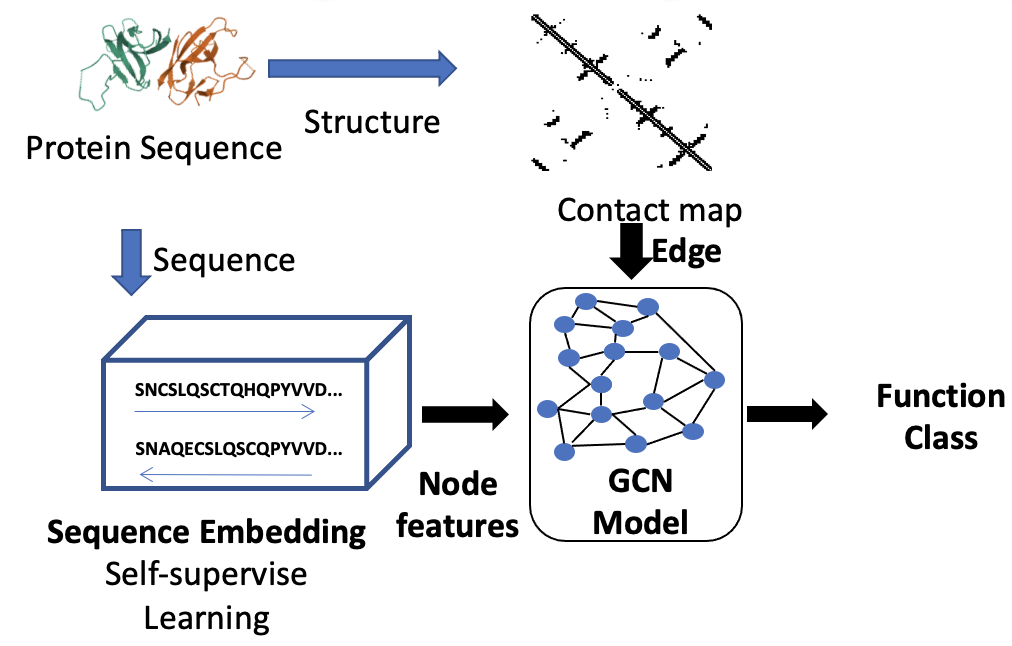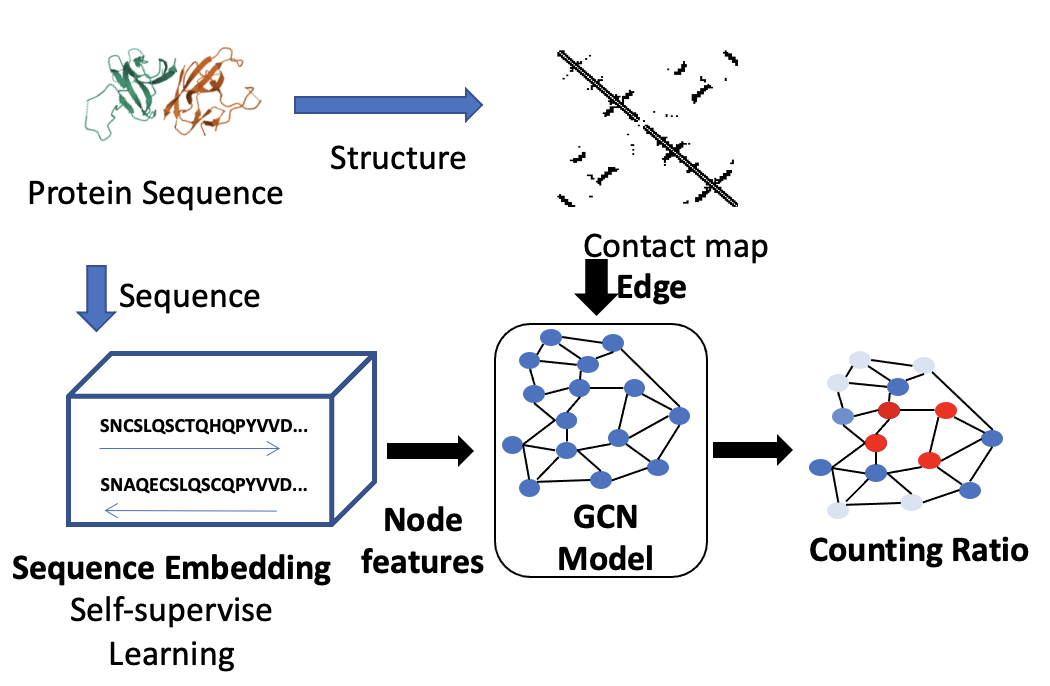AI tool for the future precision medicine and precision health.
Based on Graph Convolutional Network (GCN) molecular structure learning, Graphen Atom Protein Function Prediction Tools learn the relationships between protein structure and Gene Ontology (GO) functions. GO provides a set of hierarchical controlled vocabulary split into 3 categories: Biological process, Molecular function, and Cellular component.
These tools also use PDB Database real-world data to learn the correlation of protein structure features and sequences by self-supervise learning (SSL). SSL is similar to trained embedding model but provides more sequence features. The GCN model, via message passing, aggregates the feature of sequences and the encoded features of contact map and convolves the features by k-neighbor formula. Lastly, it uses Multi-Label cost functions to train model.
In: PDB structure file / Out: GO function

Graph Convolutional Network (GCN)-Based molecular structure learning learns models of protein relationships via protein structure and Gene Ontology (GO) function. It uses PDB Database real-world data to learn the correlation of protein structure features and sequences by self-supervise learning (SSL). SSL trains embedding model by providing more sequence features.
GCN model aggregates the feature of sequence and the encoded features of contact map, and convolves the feature by k-neighbor formula.
In: PDB structure file / Out: Binding Ratio based-on Residue
